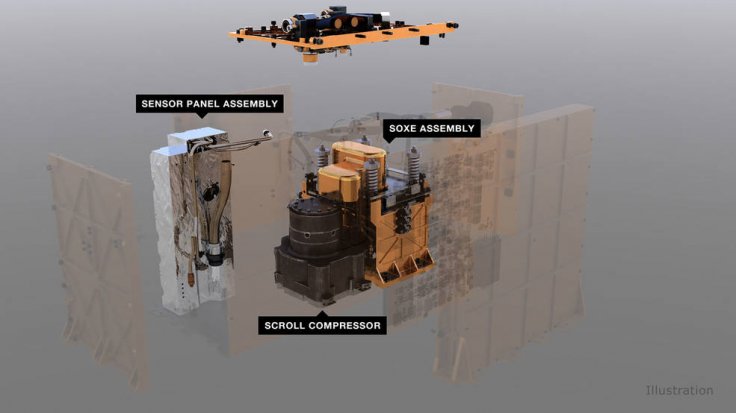NASA and SpaceX are aiming for the biggest achievement in the history of space exploration program—the Mars mission. This mission is tough but not impossible considering the technological developments. But the major problem will be setting up a human colony on Mars, which has a 100 times thinner atmosphere than the Earth, and only 0.16 percent Oxygen. But it looks like NASA has a solution.
Mars has 95 percent CO2, 2.6 percent molecular nitrogen, 1.9 percent argon, 0.16 percent oxygen, and 0.06 percent carbon monoxide. So, it is clear that the Red Planet is highly dominated by greenhouse gas. But the NASA Perseverance Rover has a device aboard called MOXIE which will convert the air available on the planet into oxygen.

MOXIE Can be Helpful
This device is under test and if the technology could produce oxygen on a larger scale, it could help humans to breathe on Mars and also be helpful for rocket fuel. NASA knows that the challenging part would be getting people off the planet and bring back to Earth.
To take the humans out of the Martian surface it would require 55,000 pounds of oxygen to produce thrust from 15,000 pounds rocket fuel. Instead of sending all of the required oxygen from Earth, scientists want to enable the Mars mission crew to create the rocket fuel on the Red Planet with the help of MOXIE—Mars Oxygen In-Situ Resource Utilization Experiment—which is a first-generation oxygen generator.
However, MOXIE is an experiment that is completely separate from the Mars rover Perseverance's primary science mission. While the rover's major work is to recover rock samples that can be returned to Earth, MOXIE is focused on the engineering required for future exploration efforts.

Michael Hecht from MIT who is the principal investigator of the MOXIE device said that being able to produce oxygen on Mars, would make the first manned mission to the Red Planet easier, safer and cheaper. The device is capable of pulling in the air using a pump and then using an electrochemical process, it can separate two oxygen atoms from each carbon dioxide molecule.
Asad Aboobaker, a MOXIE systems engineer at NASA's Jet Propulsion Laboratory in Southern California, said, "MOXIE is designed to make about 6 to 10 grams of oxygen per hour – just about enough for a small dog to breathe. A full-scale system geared to make (propellant for the flight home) would need to scale up oxygen production by about 200 times what MOXIE will create."









